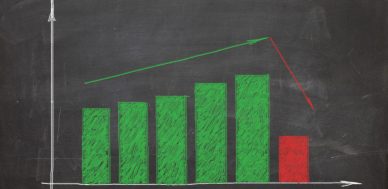Shouldn’t the Savings Rate Increase During Economic Growth?
Ask any economist and they will tell you that economic growth is when the general standard of living improves.
We are told each day that there’s robust economic growth in the United States. But the U.S. standard of living isn’t improving. It’s really worrisome and could have dire consequences over the long term.
Consider a recent survey done by the First National Bank of Omaha. Here are a few findings from the survey:
- 49% of Americans only have enough liquid assets to cover living expenses for zero to three months.
- 23% of Americans don’t put any money toward savings from their paychecks, while 73% say they put 10% or less of their monthly paychecks in savings.
- Of those who are lucky enough to save, nearly 25% dig into their savings once a month.
(Source: “First National Bank of Omaha Releases Data from 2019 ‘Savings’ Survey,” First National Bank of Omaha, February 25, 2019.)
Remember what was said earlier; in times of economic growth, the general standard of living improves. When there’s growth, individuals get better jobs, so savings should improve in an ideal situation.
Dismal savings suggests that economic growth may not be as stellar as we are told it is.
But don’t for a second think that it’s just the savings rate of Americans that’s bad. That is just one survey showing the struggle of the Average Joe. There are tons of other data sets suggesting this too.
For example, look at food stamp usage. In good times, you would expect Americans to need less government assistance because there are jobs and so on and so forth. Currently, there are nearly 40 million Americans using food stamps. (Source: “Supplemental Nutrition Assistance Program,” U.S. Department of Agriculture, April 5, 2019.)
How significant is this? There are more people in America using food stamps than the entire population of Canada.
As Savings Are Tumbling, Debt Is Skyrocketing
Here’s something more troubling.
Over the past few years, as we were being told that there was economic growth in the U.S., Americans were racking up a lot of debt. They were funding their purchases by debt.
Look at the amount of credit card debt, for example. It is massive. Americans have taken out loans to buy cars and so on.
At the end of 2018, consumer debt in the U.S. amounted to $13.5 trillion—up $869.0 billion from the previous peak of $12.7 trillion set in the third quarter of 2008. (Source: “Household Debt And Credit Report,” Federal Reserve Bank of New York, accessed April 23, 2019.)
Dear reader, I am concerned.
If this is economic growth—when Americans have next to no savings, a lot of them are struggling to cover their basic needs, and personal debt loads have skyrocketed—what will the next economic slowdown look like?
In the next economic slowdown, the struggle for the average American could be severe. Just imagine if, God forbid, Americans lose their jobs. They already don’t have any savings. Will they be able to pay their debts?
If they fail to pay their debts, what will happen to the banks that have lent them money?
Here’s some food for thought: In the last economic slowdown, the U.S. government bailed out the banks. If the government didn’t do this, the whole financial system would have fallen apart. In the next economic slowdown, will the government bail out average Americans?
